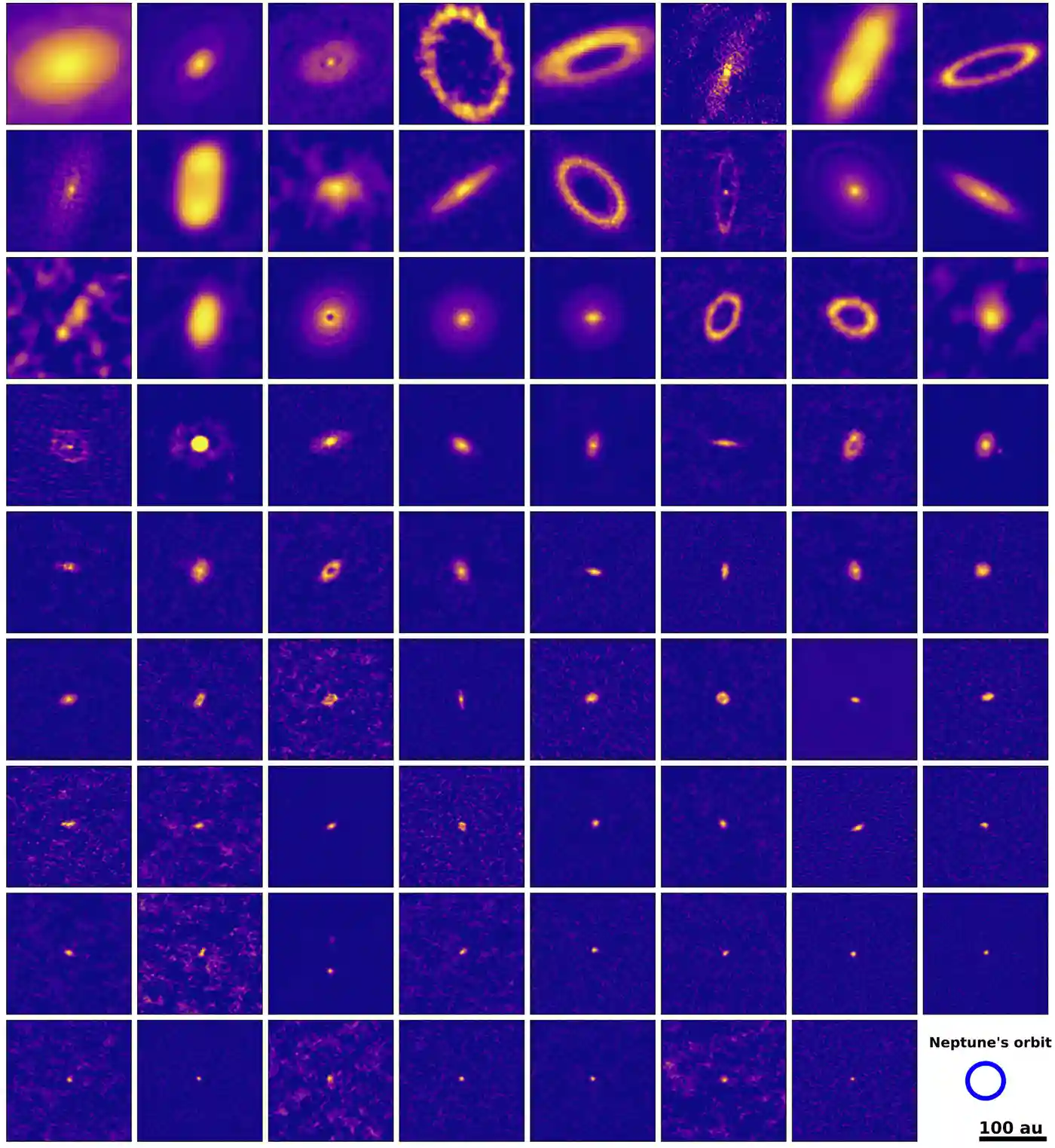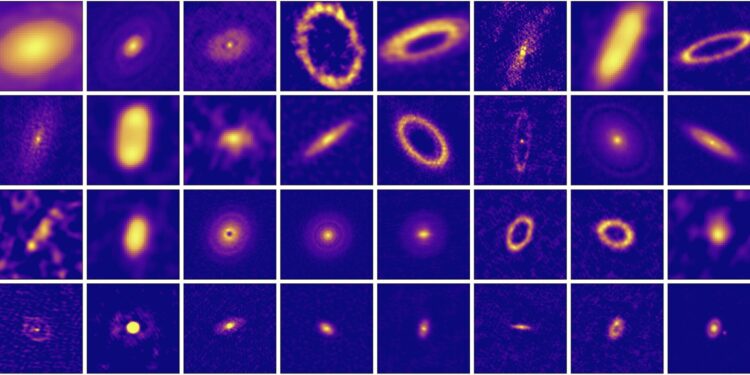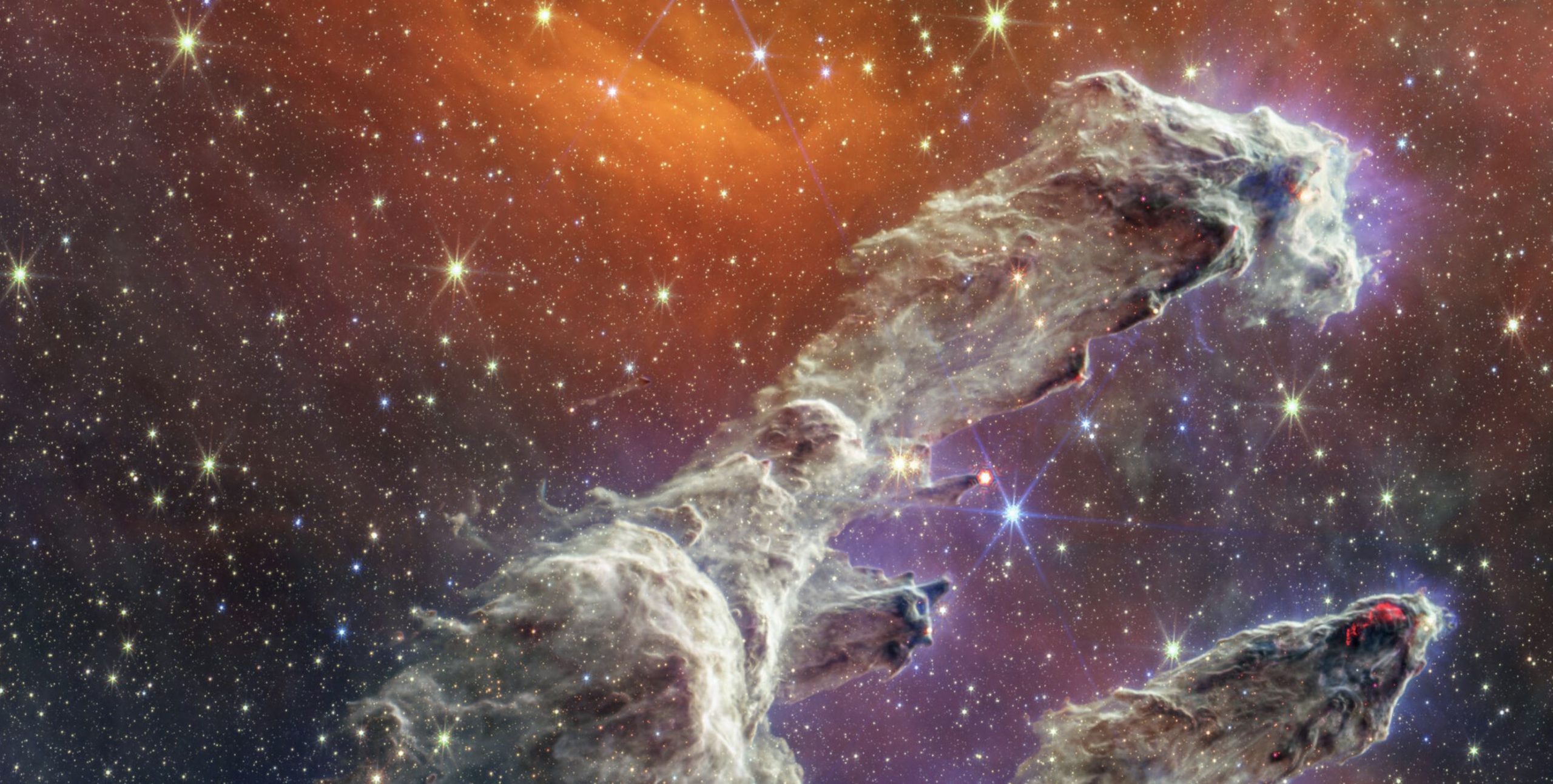A recent survey using the Atacama Large Millimeter/submillimeter Array (ALMA) has revealed that small protoplanetary disks — rings of dust and gas that give birth to planets — are far more common than previously believed. The findings, based on 2023–2024 observations of 73 young stars in the Lupus region, suggest that many planetary systems form under very compact conditions.
The study, accepted for publication in Astronomy & Astrophysics, was led by a team from Leiden Observatory. Their analysis found that two-thirds of the disks observed had an average radius of just six astronomical units — about the size of Jupiter’s orbit. One disk measured only 0.6 AU, making it smaller than Earth’s orbital distance from the Sun.
Bright, massive disks may not represent the norm
For years, images of large protoplanetary disks filled with visible gaps have shaped our understanding of how planets form. These gaps were thought to indicate regions where giant planets were emerging. However, the new survey indicates that these large disks represent only a small subset of all disk types.
Ph.D. candidate Osmar M. Guerra-Alvarado, who co-authored the study, explains:
“These results completely change our view of what a ‘typical’ protoplanetary disk looks like. Only the brightest disks which are the easiest to observe show large-scale gaps, whereas compact disks without such substructures are actually much more common.”
Most of the smaller disks in the sample were found around stars with masses between 10 and 50 percent that of the Sun — a category that includes the majority of stars in the universe.
Linking disk sizes to exoplanet populations
The implications extend far beyond disk structure. According to Mariana B. Sanchez, a postdoctoral researcher at Leiden Observatory, these compact disks are ideal environments for the formation of super-Earths — rocky planets larger than Earth but smaller than Neptune.

Credit: Guerra-Alvarado et al.
“The observations also show that these compact disks could have optimal conditions for the formation of so-called super-Earths, as most of the dust is close to the star, where super-Earths are typically found,” Sanchez says. She is a postdoc at Leiden Observatory and a contributor to this research. Super-Earths are rocky planets like Earth but with masses up to ten times that of our planet. This could also explain why super-Earths are often found around low-mass stars.
This trend also helps explain why super-Earths are more commonly observed around low-mass stars, while gas giants like Jupiter and Saturn appear to be rarer.
Reevaluating how our own solar system fits the picture
The team suggests that our own solar system — with its large, distant gas planets — may not be representative of the norm. Instead, systems with smaller disks and closer rocky planets might be more typical throughout the galaxy.
Assistant professor Nienke van der Marel believes the findings offer a crucial connection between young star systems and the exoplanets observed around older stars:
“The discovery that the majority of the small disks do not show gaps, implies that the majority of stars do not host giant planets,. This is consistent with what we see in exoplanet populations around full-grown stars. These observations link the disk population directly to the exoplanet population.”
A new benchmark for planet-formation studies
Until now, most high-resolution ALMA studies have focused on larger, brighter disks that were easier to image. The compact disks, although known, were generally too faint or small to be resolved. This new survey, which combines both new and archival ALMA data, provides the first complete high-resolution census of all known disks in an entire star-forming region.
With a resolution of just 0.030 arcseconds, the observations offer an unprecedented look at disk diversity. According to Van der Marel, these results correct a long-standing bias:
“The research shows that we’ve been wrong for a long time about what a typical disk looks like. Clearly, we’ve been biased towards the brightest and largest disks. Now we finally have a full overview of disks of all sizes.”
The findings could influence future telescope missions and redefine where astronomers look for potentially habitable exoplanets.











